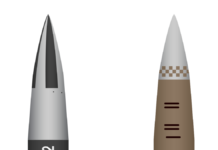In a substantial operation at the southern port of Algeciras, Spanish authorities intercepted an eight-tonne shipment of cocaine, marking one of the country’s largest drug hauls to date. The narcotics, originating from the small Latin American country of Suriname, were ingeniously concealed within a metal structure designed to resemble a power generator. This method of concealment was intended to outwit customs scanning equipment with its special alloy composition. However, the sophisticated scanning technology employed by the customs agents successfully identified the hidden cargo, revealing it to be “very high purity cocaine.”
The operation led to the arrest of three individuals, including the recipient of the shipment. This incident underscores Spain’s critical position as a primary gateway for narcotics into Europe, attributed to its strong connections with Latin America, the principal source of cocaine, and its geographical proximity to Morocco, known for cannabis resin production.
The seizure at Algeciras is a stark reminder of the ongoing battle against drug trafficking within the region. Spain’s strategic location has made it a focal point for such illicit activities, prompting the Spanish government to continually invest in combating drug smuggling, especially through the busy Gibraltar Strait. Despite challenges, including the tragic loss of two police officers in a related incident just days before this seizure, the Spanish Interior Minister affirmed the commitment to intensifying efforts against drug trafficking, albeit amid calls for additional resources to bolster the fight.
This operation not only highlights the innovative tactics employed by drug traffickers to smuggle narcotics into Europe but also the relentless efforts of Spanish customs and law enforcement agencies to safeguard their borders. The capture of such a large quantity of cocaine disrupts the supply chain of narcotics into Europe, potentially saving countless lives from the impacts of drug abuse and addiction.
Image is licensed under the Creative Commons Attribution-Share Alike 3.0 Unported license and was created by Tyk.








